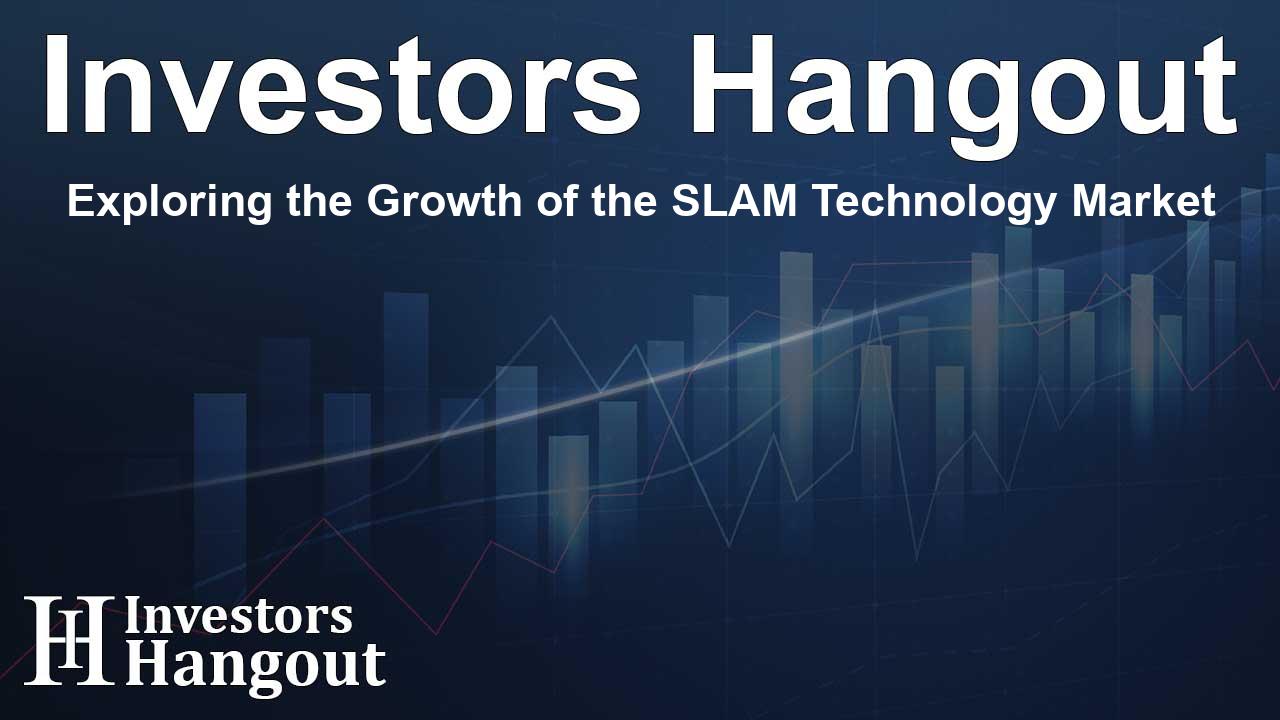Exploring the Growth of the SLAM Technology Market

Introduction to SLAM Technology
The Simultaneous Localization and Mapping (SLAM) technology has become a prevalent force transforming industries through advanced navigation and mapping capabilities. As automation and smart technologies gain traction, the SLAM market is projected to experience exponential growth in the coming years.
Market Insights and Projections
The SLAM technology market is poised to reach remarkable heights, estimated to grow from USD 478.45 million in 2023 to a staggering USD 7811.04 million by 2032. This growth represents a compound annual growth rate (CAGR) of 36.43%, reflecting the increasing demand for robust localization and mapping solutions across various sectors.
Factors Fueling Market Expansion
Several key factors drive the rapid expansion of the SLAM market. The surge in autonomous systems like self-driving vehicles, drones, and delivery robots significantly enhances operational efficiencies and decision-making processes in various industries. Moreover, as organizations seek to automate and optimize processes, the implementation of SLAM technology becomes critical.
Investment in Modern Technologies
Investment in technologies such as Artificial Intelligence (AI), the Internet of Things (IoT), and digital mapping has been a significant contributor to the growth of SLAM applications. The U.S. market, which was valued at USD 136.29 million in 2023, is underscored by strategic investments, focusing on enhancing the existing infrastructure to incorporate smart solutions.
Market Segmentation
The SLAM market is categorized mainly by its offering capabilities, which can be classified into 2D and 3D methods. The 2D SLAM segment has dominated, capturing 56.6% of the market share in 2023, driven by its efficiency and scalability in various applications, such as robotics and warehouse automation.
Emerging Technologies and Their Impact
3D SLAM is gaining momentum, anticipated to witness the highest growth rate. This segment is pivotal for applications that require depth perception and precision in navigation through complex environments. Innovations in SENSOR fusion and AI-driven mapping algorithms have significantly bolstered the capabilities of 3D SLAM, making them integral for future developments in autonomous systems.
Regional Analysis of the SLAM Market
North America, holding 38.6% of the SLAM market share, leads the market, thanks to robust investments in technological advancements and research in autonomous vehicles and robotics. Leading companies, including Tesla and Waymo, are leveraging SLAM for improved navigation in their delivery and transportation models.
Asia Pacific's Growing Role
Conversely, the Asia Pacific region is expected to experience the remarkable growth rate driven by advancements in smart city projects and investments in AR/VR technologies. Pioneering companies are actively integrating SLAM technology to enhance consumer experiences in drones and robotics solutions.
Major Industry Players
The competitive landscape of the SLAM market features several industry giants, each contributing its innovations and solutions:
- Apple Inc. (ARKit)
- Google LLC (ARCore)
- Microsoft Corporation (Azure Spatial Anchors)
- Meta Platforms, Inc. (Spark AR)
- Amazon Web Services, Inc. (RoboMaker)
- Intel Corporation (RealSense)
- NVIDIA Corporation (Isaac SDK)
- Qualcomm Technologies, Inc. (Snapdragon XR)
- Magic Leap, Inc. (Magic Leap 2)
- PTC Inc. (Vuforia Engine)
- Maxar Technologies Inc. (Vricon)
- Hexagon AB (Leica BLK2GO)
- Ouster, Inc. (OS LiDAR)
- SLAMcore Ltd. (SLAMcore SDK)
- Cognex Corporation (In-Sight 3D-L4000)
Future Trends and Developments
Looking ahead, the demand for enhanced AR/VR capabilities, coupled with the rise of autonomous systems, positions SLAM technology at the forefront of innovation. The rapid adoption of immersive solutions will likely shape the landscape of the market, opening avenues for advancements in sectors previously deemed complex or challenging.
Conclusion
As the SLAM technology market evolves, understanding its dynamics will be crucial for businesses aiming to integrate robust localization and mapping solutions. By leveraging market trends and responding to technological advancements, companies can navigate this promising landscape effectively.
Frequently Asked Questions
What exactly is SLAM technology?
SLAM stands for Simultaneous Localization and Mapping. It allows an autonomous system to map an environment while keeping track of its own position within that environment.
Why is the SLAM market growing rapidly?
Growth is driven by technological advancements in automation, robotics, and the increasing demand for AR/VR applications, making SLAM essential for performance and navigation.
What role do major companies play in SLAM technology?
Major companies are key players in developing solutions that employ SLAM technology, helping to set trends and set standards across related industries.
How does SLAM benefit autonomous vehicles?
SLAM helps autonomous vehicles accurately navigate and map their surroundings in real time, enhancing safety and efficiency in transportation.
What is the future outlook for SLAM technology?
The outlook for SLAM technology is optimistic, with expected growth in smart city applications, robotics, and continuous innovation driving the market forward.
About The Author
Contact Olivia Taylor privately here. Or send an email with ATTN: Olivia Taylor as the subject to contact@investorshangout.com.
About Investors Hangout
Investors Hangout is a leading online stock forum for financial discussion and learning, offering a wide range of free tools and resources. It draws in traders of all levels, who exchange market knowledge, investigate trading tactics, and keep an eye on industry developments in real time. Featuring financial articles, stock message boards, quotes, charts, company profiles, and live news updates. Through cooperative learning and a wealth of informational resources, it helps users from novices creating their first portfolios to experts honing their techniques. Join Investors Hangout today: https://investorshangout.com/
The content of this article is based on factual, publicly available information and does not represent legal, financial, or investment advice. Investors Hangout does not offer financial advice, and the author is not a licensed financial advisor. Consult a qualified advisor before making any financial or investment decisions based on this article. This article should not be considered advice to purchase, sell, or hold any securities or other investments. If any of the material provided here is inaccurate, please contact us for corrections.
